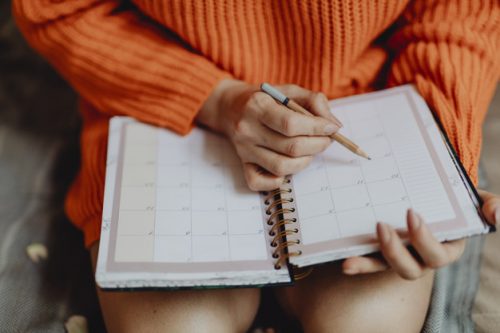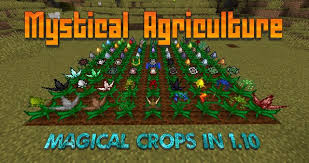Tips for Using Your Day Planner in 2024 ~ Tips for making the most of your day planner to help you stay organized and manage all of the daily things you need to do.
The Situation:
It’s well known that being well planned is essential to being well organized. One way of being well planned is to keep a day planner to track everything that needs to be done. I have tried all kinds of planners and experimented with different ways of using them so they worked for me. I have come up with some pretty solid methods and invite you to read on to learn Tips For Using Your Day Planner.
The Problem:
The problem is that it’s great to have a day planner but it isn’t very useful if it isn’t being used. I have tried planners that had their own template but I found I was trying to work with the planner rather than have the planner work for me. I have also worked with planners that were way too complicated and designed with too much detail or too much what I call ‘fluff’. Just give me the basics.
The Solution:
Years ago I decided to design a day planner that works for me. I bought a small black binder at Staples. It is the Avery® Mini Durable Binder for 5-1/2″ x 8-1/2″ Pages with 2″ Round Ring (Product #27275) to which I just add blank lined pages, plastic dividers and plastic sheets. My only cost now to maintain this day planner is replacing the blank sheets when I run out.
But working with your own planner can be a challenge too so over the years I have developed some very doable and easy strategies that make my day planner a very useful planning tool for organizing my life. So here it goes…
Tips For Using Your Day Planner
Regard your planner as a perpetual, progressive, personal working document:
The small binder system allows you to always be planning for today, next week, next month and even next year. You can just keep adding more pages as needed. I have provided you with a printable of the cover page to insert into your binder or you can just make up your own. The one I made is nothing fancy but then again, I prefer the basics. I have provided you with a PDF printable of the title page I made for my day planner that you are welcome to use:
Make a habit of referring to your day planner regularly:
For example, one of my evening routines is to place my day planner open to the following date at my place setting at the kitchen table. So when I am eating my breakfast and having my morning cup of coffee I am going through what is going on that day.
Add to your planner on an ongoing basis:
At the beginning of the week schedule a time to make additions for what is coming up that week. But also plan to add to your planner anything that comes up. When you think about it, it only takes a few minutes and it helps make sure that nothing is slipping through the cracks by being forgotten.
Note only what is important to you:
Let me explain. Our time and our lives are generally taken up by three different categories. We have to take care of the necessities in life, which takes up a large portion of our day. These are things like sleeping, cleansing and eating and this is what I call the ‘need to dos’.
These are routine things that don’t need to be recorded. Another category that takes up a lot of our time is our responsibilities. These are different for everyone but they include family, home care, job, finances, errands and meal preparation to name a few. This is what I call the ‘must dos’.
The last category includes the ‘activities’. These are the things that we like to do and this is what I call ‘like/love to dos’. This includes anything for leisure and relaxing which is also important to fit into the day. On a side note, I didn’t mention fitness or physical activity time but this is pretty essential too. It fits in both the responsibilities and activities category.
I don’t record any necessities but I do record important responsibilities and activities that I want to build into my day. For example I’ll record what meals we are going to eat for the week, which kid has to go to what activity as well as where and what time and if I don’t plan for my fitness times they tend to get put on the back burner and not get done.
Other things to record are upcoming celebrations, days off school, tests to prepare for, what bills have to be paid when to name a few.
I guess the main idea here is you decide what is essential for you to record in your day planner to help you be more organized.
Design your day planner that fits your daily schedule:
I keep each page very simple by just recording the day of the week and the date at the top. Then in the side margin I put the following: * for important reminders, am for the morning, pm for the afternoon, and eve for the evening. I also have two separate categories at the bottom of the page titled fitness and dinners. Now this is a variation to a previous popular blog I wrote about here titled How To Organize Your Day Planner. You may want to check this system out and see which one works for you.
Use a pen to record the important information:
This includes the dates, special days and events and important appointments or maybe even when you are going away on a vacation. These are what I call the constants and confirmed, meaning that a birthday or an upcoming appointment will not change.
Use a pencil for everything else:
Because as I said earlier, your planner is a perpetual, progressive working document so expect to make additions, changes and deletions regularly. I do buy a basic year planner that I use as an overview of the key things happening for the year. When I am adding things to my day planner I cross-reference with my year planner. I wrote about how I use my year planner in the post How to Organize Your Personal Calendar For The Year that provides some great tips.
Record only the key words and use a short code”
Here are some examples:
Dr. Payne @ 10:00
coffee/Ann @9:00 @ Starbucks
Assign abbreviations when you are planning for family members. When my daughter trained as a synchronized swimmer and my other daughter played a lot of basketball and volleyball my life was dominated by drop offs and pickups. And yes, I recorded these too because I have forgotten a child once or twice. Their short code looked like this:
T swimming 7-10 @ Splashy Pool
B basketball game 7-8 @ Learner High School.
I chose not to colour code the kids because I never seemed to have the right colors handy at the right time but you may prefer that method.
Circle your priorities for the day:
With a pencil crayon or a red pen. These are the things that have to get done can’t be forgotten or perhaps it’s something that you have been meaning to get to and this is the day you are going to do it. You can also record it at the top of the page where you placed the * symbol.
Check off things as they get completed:
I prefer this to crossing off because it has a more positive vibe by giving me a visual of what I have accomplished.
Carry forward anything that didn’t get done:
That day to the next day or whenever you can get to it again. I also show that with an arrow pointing to the next day. When it’s taken care of, check it off on all pages. Be careful not to over plan. Trying to fit too much in a day just leads to adding stress to your life.
Clip corners of every page where the day has passed:
This little tip helps you find the day you are looking for more quickly.
So these are Tips For Using Your Day Planner. They are very simple and very doable. But they do help make the important task of daily planning manageable and successful.
I do have a smart phone, which is my other lifeline in keeping me organized and planned. Here I share the different apps I use. That is me on the beach at the Gold Coast in Australia. A spent a month with my daughter there while she was attending medical school.
Now it’s your turn. What are your thoughts and how do you use your day planner? Do you see using some of the ideas I shared in Tips For Using Your Day Planner?




